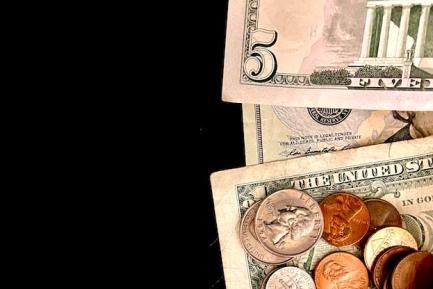Be careful what you wish for (and be wary of your neighbour’s economy): Trump and the dollar
Trump’s decisive victory and the Republican majority in Congress have triggered a significant appreciation of the dollar against its peers (3% in the nominal effective exchange rate) and in particular against the euro (4% cumulative appreciation between 5 and 26 November). The scope of the policies announced during the campaign affects the outlook for the euro-dollar exchange rate, which we review in this article.

The dollar has been appreciating against the euro since the end of September (by more than 6%), driven by the buoyancy of the US economy, which has been exceptional among the world’s major developed economies and contrasts with the weakness exhibited by the euro area. In Europe, the manufacturing crisis in the core countries is not yet showing any signs of reversing, in a context of low productivity growth. In addition, France is facing a severe fiscal consolidation, while Germany is immersed in an intense political debate about the desirability of increased public investment. All this has led to differences in interest rate expectations on either side of the Atlantic.

Trump’s victory has extended the trend of a strong dollar, given the effect his policies have on the currency (at least according to an initial static assessment, which does not take into account potential responses from the US’ trading partners, and in the short term). Broadly speaking, the channels through which these policies are expected to affect the dollar are as follows:
1. The introduction of a universal tariff would have an inflationary effect on the US economy, whether it leads to a substitution of imports or they simply become more expensive. Higher inflation should lead to higher interest rates and, therefore, an appreciation of the dollar.
2. Another of the policies announced by Trump – that of tax cuts, particularly for corporations – would lead to higher business earnings. This would attract foreign investment flows and should have an appreciative effect on the dollar.
3. Finally, with regard to restrictions on migration, they should be appreciative for the dollar in a context such as the current one. The labour market is normalising, but it remains stressed, and a reduction in the supply of labour would potentially be inflationary, thus driving up interest rates and the dollar in the short term. That said, in the longer term, a restriction on migration would have a negative impact on the economy’s potential growth and, therefore, on the real effective exchange rate of the dollar.

Market interest rate expectations have incorporated these elements. Meanwhile, the expected speed of the Fed’s rate cuts has moderated significantly in recent months, as the terminal rate is now anticipated to be around 3.75%, compared to a rate of 3% anticipated in late August. On the other hand, the markets now expect the ECB to lower interest rates to 1.75%, while a few months ago the terminal rate was expected to be 2.00%.
The currency has also reflected these changes. The appreciation of the dollar since late September is closely correlated with the movements of the yield curves on both sides of the Atlantic. While in the euro area there has been a slight steepening of the slope in the 2-5-year section of the curve, revealing expectations of some cyclical improvement, in the US this same slope has flattened amid expectations that rates will remain higher for longer and that Trump’s policies will entail a cost for longer-term growth.
On the other hand, as shown in the first chart, the appreciation of the dollar against the euro has been even greater than the movement in short-term interest rate (and inflation) expectations. This responds to the impact that the policies announced by Trump could have in the short term.
All of this suggests that the recent appreciation of the dollar may consolidate in the coming months, or that it could even continue and bring the dollar to close to parity with the euro next year if the new Trump administration finally implements the measures announced during the campaign.
The risks to the outlook of the euro-dollar exchange rate are multiple. On the one hand, the final shape of Trump’s economic and trade policies is yet to be defined. As we saw in his previous term, many of his electoral proposals had a short life, and some of the announcements of tariff hikes were used as a way to apply negotiating pressure. On the other hand, inflation in the US could also end up falling faster than expected, or the normalisation of the labour market could lead to greater weakness. In either of these scenarios, the Fed could lower interest rates faster or more decisively than expected.

Finally, there are many global pockets of geopolitical risk which, if they were to materialise, would most likely have an appreciative effect on the dollar. After all, it remains the international reserve currency, attracting investment flows at times of heightened risk aversion.
As for the euro, the first thing to note is that it seems unlikely that the ECB will alter its monetary policy in the face of a moderate depreciation of the euro against the dollar, considering that the elasticity of inflation to the currency is low. An ECB study places it at 4% with data for 2016, since the total content (adjusted for the share of foreign-currency turnover) of imports originating from outside the euro area in the consumption of euro-area households is also low: 9% according to this same study.1
Secondly, the euro area economy remains highly exposed to China, and any cyclical improvement in the Asian economy has a positive impact on the euro area and on the currency, as the demand for euros increases. Since 2011, credit growth in China (so-called «social financing») has had a close correlation with the appreciation of the euro against the dollar. In this regard, the recent evolution of credit in China suggests that we can expect both a further depreciation of the euro against the dollar in the coming months and, once China’s recent public stimulus measures reach the economy, an appreciation towards the end of 2025.
- 1. See E. Ortega and C. Osbat (2020). «Exchange rate pass-through in the euro area and EU countries». ECB Occasional Papers, nº 241, April.
- 1. See E. Ortega and C. Osbat (2020). «Exchange rate pass-through in the euro area and EU countries». ECB Occasional Papers, nº 241, April.




